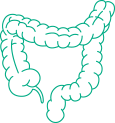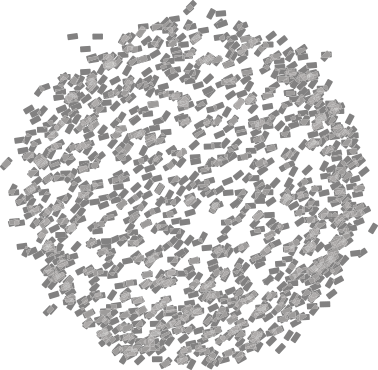Genome
Human genome consists of about 19,000 genes, in which millions of known mutations correlate with hundreds of inheritable diseases.
Traditional genomics research focuses mainly on accurate sequencing instead of quantification.
Microbiome
Typical gut microbiome consists of quadrillions of microbial cells, which hold up to 9 million functional genes varying in abundance.
Accurate quantification is thus required for most microbiome analyses.
 Depression
Depression Obesity
Obesity Inflammatory Bowel Disease
Inflammatory Bowel Disease

Target Sequences Irrelevant sequences
- Most available target-region methods are developed and optimized for traditional genomics, which lacks the ability to preserve abundance of certain sequences, and thus could not be used for microbiome research.
- The abundance of functional genes correlating with certain phenotypes such as depression, obesity and IBD, tends to be extremely small (less than 1% of total sequenced reads).

- Thus, a fair amount of cost was spent on uncorrelated sequences, resulting in inefficient research conduction and overpriced commercial testing.
T2D prediction model

≈9 Million Other Genes
≈130 Marker Genes

Useless Data: > 99.9%
Useful Data: < 0.1%
As association studies of microbiome grow, an accurate target-region quantification method, which could retrieve the relative abundances of any given target, is more than needed.
≈130 Marker Genes
Useful Data: < 0.1%
T2D prediction model
Traditional Probe-based Sequencing
Traditional probe-based sequencing methods would result in target sequences with abundances determined by quantities of corresponding probes.
Traditional PCR-based Sequencing
Traditional PCR-based sequencing methods would result in target sequences with abundances interfered by bias of polymerase over amplification cycles.
LinEnrich™
Target-region Quantification Method Designed for Metagenomics
LinEnrich™ technology is the previously absent, first ever workable target-region quantification method for metagenomics research, allowing scientists and companies to quantify personal microbiota in desired sequences instead of a whole.
